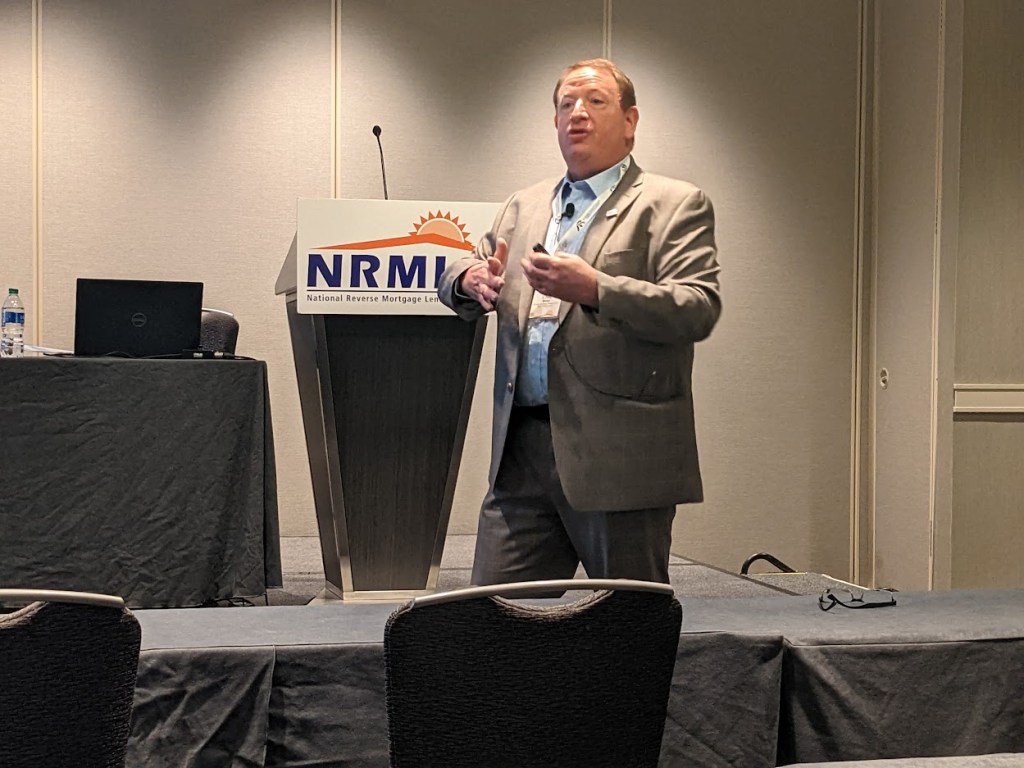Reverse mortgage professionals, particularly those on the sales and operations side, may look at the servicing process as the end of the line.
However, they may want to remember that for the borrower, that is just the starting point as a reverse mortgage beneficiary — and in some cases may also be the start of their contact with the originator, according to Craig Barnes, reverse mortgage industry educator and trainer, who recently held a webinar hosted by the National Reverse Mortgage Lenders Association (NRMLA).
During the webinar, Barnes highlighted misconceptions from the servicing process that industry professionals may have to contend with once a loan moves past the origination phase.
The start of the reverse mortgage
There can be a stark disconnect between reverse mortgage professionals and borrowers in terms of what the servicing process means, Barnes said.

“[This] is really about what a lot of us on the sales and the operations side think of as the end of the process,” he said. “But for our borrowers, it really isn’t. It’s almost the start of the process, the start of them having the loan, having the ability to draw funds, to get those monthly statements, to get occupancy certifications. [It deals with] all the things that we as loan officers will possibly understand and communicate to them.”
Much has been said about the fact that the reverse mortgage business is a very consultative one, where a borrower may be in contact with their originator sometimes years after their loan closes.
Point of contact
For many originators, continuing to assist a borrower with whom they’ve closed a loan is a point of pride. However, if a borrower goes to their originator with a specific question about their reverse mortgage after closing, the help the originator can provide is limited.
“[Servicing] is the main point of contact with your borrower after loan funding,” Barnes said. “And it’s important for you if you’re a loan officer to understand that there is only a limited amount of information that you’re going to have about that loan. So, if they are coming to you to ask questions after that loan is already closed and boarded with the servicer, really, you want to steer them back to the servicer themselves.”
A borrower has to directly authorize the loan originator to provide loan details to other parties, Barnes said.
“The servicers can’t even provide information about the borrower’s loan to [you, the originator] unless they have the authorization,” he said. “Even if you’re doing a conference call with the borrower and servicer, they can provide that information with you on the phone as long as the borrower says it’s okay. But even if you call back an hour later, that authorization was just for that phone call. You’d have to call back with them again and get it again.”
Reverse mortgage servicer responsibilities
For borrowers who are unclear about what their servicers are responsible for, it could be beneficial to remind them of the following: servicers oversee the distribution of loan proceeds; the release of regular monthly statements; changes that may occur in a payment plan; annual occupancy certifications; life expectancy set aside (LESA) payments/distributions; correspondence with borrowers about their loans; and the end-of-loan functions after a borrower dies or moves away.
In relation to payment plan changes, it may be helpful for originators to keep in mind that a borrower can make changes to their payment structure with a $20 fee through a servicer, Barnes saidd.
“Let’s say [the borrower’s] circumstances change over the years that they have that loan,” Barnes said. “They [may have] initially put all the money in a line of credit. [Maybe there have been] changes to their financial situation, such as their pension or the retirement funds that they have available to them. Maybe they want to look at getting a tenure payment, for instance. Well, they can call their servicer, who can recalculate those numbers and [make] a payment plan change.”
Borrowers may also need to be reminded about the occupancy check, which must be performed for every borrower on a loan, according to Barnes.
In terms of the end-of-loan functions, the servicer will facilitate the next steps. They may ask the borrower’s heirs if they want to pay back the loan balance to maintain ownership of the property or sell the home to pay it back.
Servicing reminders for LOs
Barnes also reminded the audience about some key details of servicing, including the fact that all loans are subject to rescission and that funds will not be available at closing, except in the case of a purchase transaction.
“That is always a good reminder to tell anyone who comes directly in contact with your borrower, understanding that they are not going to get a check at the closing table that they can cash,” Barnes said.





